ceiling collapsed!
Help! My ceiling collapsed last night. I sealed off the affected area and my family is living in another area of the house. I need advise on how to minimize exposure to asbestos dust in our new alternate living area as the central air unit continues to carry these culprit dust particles all over the house. Do you suggest I humidifiers to keep the dust down? Also, how should I approach cleanup in the this new alternate living area where I can't see all the dust? Should I do it myself, or just leave it to a professional company?
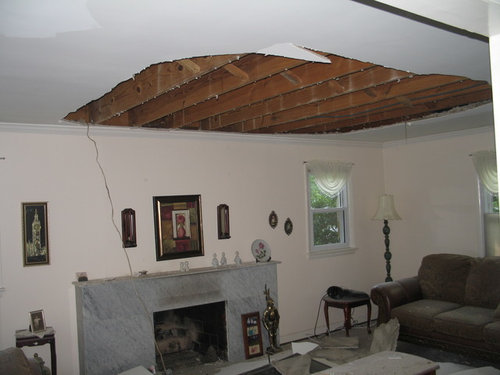
Comments (44)
liriodendron
10 years agoWhy do you believe you have asbestos-contaminated dust?
Perhaps you do, but perhaps not. You need to have it tested (by a competent lab NOT connected to a remediation service) before coming to that conclusion.
Turn off your central air, or close that section, if only to contain the dust, whether asbestos or not.
Why did the ceiling fall? They don't do that for capricious reasons of their own.
What a mess! But at least yours seem to be some kind of sheetgoods, not plaster.
L.
Related Professionals
Lenexa Kitchen & Bathroom Designers · Beachwood Kitchen & Bathroom Remodelers · Athens Kitchen & Bathroom Remodelers · Broadlands Kitchen & Bathroom Remodelers · Centerville Kitchen & Bathroom Remodelers · Chicago Ridge Kitchen & Bathroom Remodelers · Clovis Kitchen & Bathroom Remodelers · Garden Grove Kitchen & Bathroom Remodelers · Patterson Kitchen & Bathroom Remodelers · Port Orange Kitchen & Bathroom Remodelers · Thonotosassa Kitchen & Bathroom Remodelers · Walnut Creek Kitchen & Bathroom Remodelers · West Palm Beach Kitchen & Bathroom Remodelers · New River Architects & Building Designers · Washington Architects & Building Designersturtlelearner
Original Author10 years agoThanks for responding to my post Liriodendron and LazyGardens!! Somehow, I can't locate your first feedback, so I will go with your second.
First things first: Lazy gardens: My insurance company is going to send out an adjuster who is going to make a decision on whether or not this disaster is covered. They suggested that if I check to see if any of the plaster droppings have higher than normal moisture content, She said that high moisture could be evidence that water damage caused the collapse and if so, the disaster may be covered. She said that colapses are typically not covered simply when a ceiling falls down because of its age and the sheer weight of it. . . . . so I think I need to start planning to take care of this myself without insurance.
Liriodendren's question: Why do you believe you have asbestos-contaminated dust?
Perhaps you do, but perhaps not. You need to have it tested (by a competent lab NOT connected to a remediation service) before coming to that conclusion. But at least yours seem to be some kind of sheetgoods, not plaster.You are right, I don't know for sure, and your suggestion that it may not be plaster is encouraging but :
is it not true that when you can't drill into material with a medal drill bit, that is a good indicator that it is plaster? . . . .Also, do you suggest I wait for the test results before I begin clean up efforts?
Liriodendron: Why did the ceiling fall?
I don't know why, but I am going to check out the moisture level in the plaster/sheetrock. . . . believe it or not, I own an extech moisture meter.
Lazygardens: Thanks for the thorough tutorial on how to approach clean up!! I would be using a painter's mask when working with the suspect materials. How about the air ducts . . . Do you suggest I have them professionally cleaned? How about the chimney . . . do you suggest I have it swept?
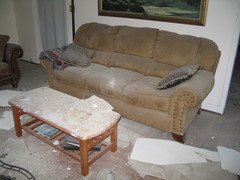
columbusguy1
10 years agoLook at the back of the fallen pieces...plaster is attached to the joists with either wood lath or metal lath which looks like large screen material. If the back is a papery layer, then you have a drywall type product with very little chance of it being asbestos.
You don't say how old the house is...I'd say that after about 1970 plaster got to be too slow for most cheap houses, and was done using drywall instead...all you need to worry about is controlling the dust and not this morbid fear which the government has inspired about asbestos. Without a closer look at the joists, it appears that there was no lath, which indicates drywall to me.
lazy_gardens
10 years agoWoah! You are right ... no lath! Usually when plaster drops like that is leaves the lath behind, still attached to the joists.
Drywall got going in the 1930s, or there may have been a replacement ceiling by a previous owner (although they usually leave the lath in place).
It may be drywall or even "Rock Lath" (a panel made up of compressed gypsum plaster board that was sometimes grooved or punched with holes to allow wet plaster to key into its surface)
Anyway ... cleanup is the same. As you pick up pieces, feel them to see if they feel cooler than you expect. If so, bag it in a small ziplock for moisture testing. You can't always see the water damage, but it cools the plaster as it evaporates.
I doubt much got into the chimney, although cleaning them is a good idea if you use the fireplace.
Ducts? Most of the dust will be close to the grills: remove grill and vacuum as far as you can reach.
Here is a link that might be useful: Rock Lath
This post was edited by lazygardens on Thu, Jun 6, 13 at 22:36
brickeyee
10 years agoSure looks like gyp lath.
It was the 'next thing' after wood strips and expanded metal.
It is also known as 2-coat plaster.
No base coat to key into the lath.
The panels are a lot smaller than 4 x 8 foot drywall panels.
This post was edited by brickeyee on Fri, Jun 7, 13 at 15:37
turtlelearner
Original Author10 years agoColumbusguy1 - Thanks for weighing in on my predicament!! Regarding lath you refer to, my house was built in 1946. Does that explain why I don't have the lath you are referring to.? As you can see from the attached photo, my layer that attaches to my 2 x 8 beams doesn't have holes in it as the rock lath shown on the web link that lazygardens provided. It is definatly not metal and I don't think it is wood either, because when pressed in my moisture tester probes, it felt very rocky and griddy, but as you may be able to see from the photo, a nail holds only the 1/4 inch light gray lath to the 2 x 8 beams above, then, after a paper seperater, there is another 1/4 inch of darker gray sheetrock looking stuff topped by 1/8 inch of white plastery looking stuff which is what shows when looking up from the couch. The encouraging news is that there IS a papery layer that backs my layer that is in contact with the 2 x 8 beams.... so maybe it is a drywall product as you suggest.
Lazygardens, thanks for your suggestion on the ducts and cleaning near the grills. Regarding the moisture testing . . . turns out I used my moisture tester. Turns out it was raining today and a beam in the other end of the house that gets wet every time we get a long rain like this registered 35 percent on my moisture tester this morning. 99 percent of the colapse damage samples registered at 8 percent which is in line with the rest of my house. Only one piece of plaster registered higher than normal, and it was still low at only 12.8 percent. It had a water stain. . . . based on these tests, it doesn't appear that water damage caused this colapse.
Question regarding the ducts: the morning after the colapse, my wife said there was plaster dust on her desk which is directly upstairs from the colapse. I am trying figure out how that dusk got up there. We do have a fireplace in that room and fire place directly below in the colapse room, but the fire places are on seperate chimneys.
So based on what you know, do you suggest I proceed with cleanup using your suggested procedures and not wait for the asbestos test results?
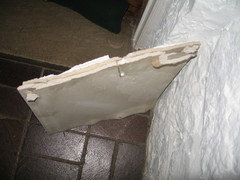
lazy_gardens
10 years agoI'd go ahead and start cleaning. If nothing else, you'll feel better.
The risks of asbestos have been greatly exaggerated, mostly by the ambulance-chasing lawyers ... a 1-time exposure like this is nowhere near as much exposure as the shipyard workers were getting. They were covered with the stuff for an 8-hour shift, every shift.
FIY, the air in much of the San Jose CA area has more naturally occurring asbestos than the EPA considers safe in homes.
turtlelearner
Original Author10 years agoNow that I have ceilled off the affected area blocking all intake and outgoing vents, and ceiled off the only two entrances to the area, what is the risk of turning my central air unit back on to cool the safe part of our home?
Is it true, that simply sending a sample into a lab for testing is not necessarily a valid test? In other words, if I am not trained in identifying a good sample, and send in a bad sample, the lab results could be misleading. In other words, is it true the lab results are only as good as the sample that is sent in? If this is the case, do you suggest, I pay the extra $250 to have a professional come into my home and take the sample?
turtlelearner
Original Author10 years agoLazygardens, Thanks for your re-assuring comment, however, for planning purposes, i.e., it would sure be helpful to know what the exposure level is when everything is tore up like this so I can decide who I will hire to fix it, i.e., if test results suggest zero or very low levels of asbestos in the material, the repair will be much less complicated and thus, much less costly. That is why, I hesitate to clean up before I either get it tested (by sending in a sample to a repudible lab) or have someone come in and test it. Does that make any sense at all?
southerncanuck
10 years agoA few hundred dollars for peace of mind is well worth it. As someone already said do not hire an asbestos removal company to test.
From all your photos it appears to be 2 layers of gyp rock with a plaster skim coat. I don't fully understand concerning the heavy rain and wet beam scenario. That water infiltration has to go somewhere. You do say there is a stain on the board, there has been water there to some degree in the past. What about between the 2 boards, are there stains there?
You say there is around 8% moisture on most of the fallen material with 1 showing around 12%. What is normal moisture for drywall? This might be answered by the group. I would venture a guess it should be less than what you have. It is after all called drywall. I don't know the answer.
Cut exactly 1 square foot of the collapsed ceiling weigh it. Compare that weight with what it should be. We will need to find out what a normal square foot of that type board should weigh.
Because the gyp rock doesn't show a high degree of moisture now doesn't mean it wasn't caused by leaks in the past. Look for rusted nails still imbedded in the 2x8's on the ceiling. The weakened oxidized fastener heads may not have been sufficient to hold up the ceiling at the moment of failure. Are the nails left behind still have a good round head? Are the nails left behind the proper length they should be?
You are hoping that this was caused by water infiltration now or in the past for the insurance to cover the damages.
What needs to be determined is a definite cause of failure. That isn't the only ceiling in your home, I don't want you to become alarmed but we need to get the rest of the ceilings in the home checked for play.
Why 2 layers of wallboard, are you sure they are only 1/4 inch each? Just comparing the picture to the grout lines in the wall tiles in the photo the gyp rock seems to be thicker than 1/4 inches each. Anything thicker than 1/4 inch and a coat of plaster is too heavy. How thick was the plaster coat? If another 1/4 inch that's 3/4" total, that would be very heavy. I have seen a large amount of dust on ceiling board when removing old ceilings for a rehab. Years and years of who knows where it comes from dust as well as the 2 layers of gypsum board coupled with a layer of plaster added to a small increase in moisture may have been the straw that broke the camels back.
Clean up is important yes, but we need to find the root cause and ensure this failure can not and will not occur again. No one wants to lay in bed looking up at a ceiling wondering if it's going to collapse.
Dust in your ductwork is the least of your worries right now.
turtlelearner
Original Author10 years agoSouthern Canuck, Thanks for responding to me dilemmna! I probably confused you on the heavy rain scenario. The heavy rain. . . . occured a day after the incident and the wet 2 x 8 beam I was referring to is clear on the other side of the house on a different section of ceiling (no where near the affected area). I brought this scenario up only to build the case that if my plaster board were water logged, it would seem my moisture tester would have shown a number closer to 35 percent, not 8 percent which is the normal moisture content for ceiling plaster board in other parts of my house, but I agree with you that 8 percent appears to be high for âÂÂnormalâ drywall. Your suggestion to weigh a 1â X 1â is interesting and I now have the 1â X 1â cut, but still need to get it weighed.
Question: Do you have a way of finding out how much a 1â X 1â is supposed to weigh?
BTW, I did go in and validate the sheet rock layer measurements last night by checking about 5 or 6 different pieces from different parts of the room. The 1st layer of sheet rock which is in direct contact with the 2 x 8 beam is üâ as I suggested earlier. The second layer is a tad less than üâ and then the plaster is about 1/8âÂÂ, so the whole thickness amounts to just a tad over ý inch. Regarding weight, I did see some dust and some stuff that looked like gravel.
The condition of the nails: Each nail is 1 ü inch. All nail heads, though rusty looking, are in tact. With 95% of the nails still in the beams, it leads me to believe the nails were long enough to do the job and it was not a workmanship error.
One aspect I didnâÂÂt get a chance to explain to you earlier: approximately two weeks before the ceiling collapsed, my wife and son pointed out a crack in the ceiling that protruded over 5 feet parallel to, and about 1 ý feet in from the fireplace outer wall. A week before the collapse, the crack was more pronounced and extending over 8 feet of the collapse zone. After the collapse, the crack is now extended beyond the collapse area (see cracked plaster photo below). Last night, I took a closer look at this area and made four observations, 1) plaster had pulled about 4 -6 nails from 2 x 8 beams corresponding to and directly beneath this crack line. 2) The ceiling that is still hanging still appears to show that the lowest point of the ceiling corresponds to the same place where this crack line was. 3) the collapse goes all the way to the wall on the outer wall/fireplace side where the crack line was and does not go all the way to the inner wall side of the collapse. 4) On the floor, directly under the crack line was 16â x 16â piece of sheetrock with an water stain.Question: When you said "What about between the 2 boards, are there stains there? What 2 boards are you referring to, between the two layers of gyp rock, or between the...
turtlelearner
Original Author10 years agoSouthern Canuck, Regarding your last comment about doing due diligence to identify the cause of the problem. You suggested that if one ceiling collapses, another could collapse due to the same cause . . . . . I have made some observations. 1) The living room ceiling that collapsed is the only ceiling in my house that has no light or vent or other fixture that could strengthen the integrity of the materials. 2) I checked out the ceiling on the 2nd floor above because that ceiling is roughly the same dimensions. I checked a few places. I noticed that, at least for now, the sheet rock appears to have normal contact with 2 x 8 beams. In other words, the nails and the sheet rock do not appear to be pulling away from the beams (see 2nd floor sheet rock contact photo). 3) There are no cracks in the 2nd floor ceiling like the one I saw in the living room ceiling.

southerncanuck
10 years agoSometime between yesterday and today there is a post I made after your morning post that has disappeared somehow.
A readers digest version of that post.
I believe you may have shifting, settling or sinking of the masonry fireplace. The moisture issue may be a red herring or it may have contributed to the fireplace movement.
Call insurance asap, which I'm sure you already have and get a good structural engineer in to inspect.
Don't remove anything from that room, it's all evidence.
turtlelearner
Original Author10 years agoThe insurance adjuster just left the house with the company line "we don't cover this kind of collapse and the only way we would cover water damage is if we saw the water leaking directly from the floor above". He is the only USAA adjuster in town. I don't know whether or not he is a good structural engineer. Correct me if I am wrong, but sounds like you are suggesting I ask USAA if they cover shifting, settling or sinking and then, hire a structural engineer to do an evaluation. If the evaluation confirms our suspicions, then, if USAA pushes back, push them for the coverage based on the evidence, but especially because it will probably happen again.
question: Which masonry fireplace you are referring to, the one in the picture, or the one directly above it on the floor above, or both of them?
BTW - the cut out a 1' X 1' as you suggested, turns out its 1'1/4" x 1' 1/4". I had it weighed at the post office. It weighs 5 lbs 1.30 oz.
Question: How much does one normally weigh?
turtlelearner
Original Author10 years agoSouthernCanuck,
I Just called the insurance adjuster back. He said that I wouldn't find any insurance company who would cover "settling" . . .something about it is driven by state law.Question: Do you agree?
When I asked the adjuster what I could do to ensure it would never happen again in spite of the continual settling problem, he suggested I put regular sheet rock in and screw it and glue it.
worthy
10 years agoThat's right in line--between the weight of drywall at about 1.6 lbs. per sq ft. per .5 " thickness and three coat plaster of about 10.4 lbs. per sq. ft. for 7/8" thickness.
However, that's still pretty heavy and old rusted fasteners will fail. As well, there is regular differential movement between and among building materials. Water leaks at some previous time may have added to the weight. Throw in the forces of live weight, i.e., people and their stuff, wind and mild earthquakes and something's gotta give.
I doubt the fireplace has anything to do with this. Recent movement will be evidenced in new cracks in the mortar.
Next time you see cracks developing in a ceiling don't just wait to see what will happen.
turtlelearner
Original Author10 years agoLet me make sure I understand. Since the insurance adjuster was pretty clear suggesting settling, shifting and sinking are not covered and would not be covered by any homeowner's insurance in any state, do you suggest I hold off on cleanup, leaving all evidence in place until I can identify and hire a structural engineer to come in and try to identify the cause?
brickeyee
10 years agoFalling is not "settling, shifting and sinking."
He is doing his best to get it into a category they do not cover.
You might need to get an attorney involved, depending on repair costs.
We had an insurance company in Virginia that tried to refuse to cover a deer that smashed through a sliding glass door and tore up a family room as "vermin damage."
They lost.
Deer are pretty far from "vermin."turtlelearner
Original Author10 years agoRegarding the settling, shifting, sinking. That was not the insurance adjuster's idea, . . . it was my idea. However, after investigating the fireplace above the collapse and the chimney outside the house. I found no evidence of an settling, shifting, or sinking. Please see photos and give me your assessment.
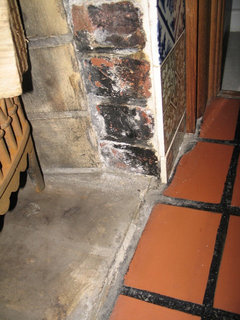
turtlelearner
Original Author10 years agoShould I decide to commence with the cleanup, I am still concerned about asbestos. Please see the closeup photo showing the three layers of material in the sheet rock. If I could only afford to test one of those three layers for asbestos, which layer would you test, 1) the light gray that connects directly to the joists, 2) the dark gray in the middle, or 3) the white plaster which we see when we look up from the couch?

southerncanuck
10 years agoTurtlelearner,
I can't comment on the insurance issue. Your specific policy would determine coverage I believe. As Brickeyee says they are doing their best not to cover.
The root cause of this collapse appears to be sheer weight coupled with live load and time. The lack of cracking in the mortar joints in the fireplace(s) is a good sign. No problem there.
As stated by a few earlier if it makes you feel more comfortable get the material tested for asbestos.
Clean up, replace the ceiling with 1/4" drywall and you are good to go. You may have to fir out the joists to make up the difference in thickness of drywall.
Good luck to you.
brickeyee
10 years ago"eplace the ceiling with 1/4" drywall "
1/4 inch will sag on the joist spacing.
You need at least 1/2 inch, and two layers of 3/8 may have a better chance of being the same thickness as what fell.
southerncanuck
10 years agoThere are thinner drywall thicknesses available here to minimize ceiling weight. And it won't sag on the joist spacing.
What does eplace mean?
turtlelearner
Original Author10 years agoThanks for your help guys. I'm still trying to get insurance to pay for this disaster.
turtlelearner
Original Author10 years agoWhat would be the total cost to clean up this mess, repair the damaged ceiling and refinish the coffee table? (Rough Order of magnitude)?
maryinthefalls
10 years agoThis isn't going to be very helpful for your predicament, but, I once owned a 1960s house in Michigan. When I was selling it, the inspector told the buyers that the ceiling in the master bedroom was double drywall and ready to fall down. I had to pay to have somebody put screws all over, remud and paint. You may wish to check the ceilings in other rooms.
toxcrusadr
10 years agoIf you are going to have the stuff tested for asbestos, send a sample that includes all three layers. I am not sure that this type of material ever contained asbestos, so I can't tell you whether to test or not. Some research is in order first.
Rather than spend a lot of $ on a lawyer to fight your insurance co, or a structural engineer, I would find a good home remodeling guy and have them: 1) give and opinion on what caused it and 2) estimate the cost to fix it. You may spend more on the lawyer than just putting up some drywall.
toxcrusadr
10 years agoJust from 10 mins of reading it appears gypsum lath board is not likely to contain asbestos, but some drywall mud (joint compound) did contain asbestos. If you haven't read up on this and are interested, Google "Asbestos gypsum lath". Numerous folks have posted questions just like yours on various forums.
If you have asbestos I would not screw around and pretend the threat is overblown. The problem with indoor dust is that it lives in the carpets and nooks and crannies for a long time, exposing you continually. If it's asbestos I would hire someone to HEPA vacuum the place to make sure it's clean. You only get one set of lungs.
And write down what you learn and store it in a file that *goes with the house* if you ever sell it, so the next owner won't have to reinvent the wheel.
Good luck.
turtlelearner
Original Author10 years agoMaryinthefalls, thank you so much for your comment. It is nice to know that I was not singled out for this callamedy.
Toxcrusadr, Thanks for your comment on the possibility of asbestos in the joint compound and the dust hazard. I plan to have a professional test it before and after the cleanup.
Regarding your comment about "just putting up some drywall" please see photo. One the gentlemen on the wavyglass forum suggested I have a much bigger problem. On the photo, he pointed out the white streaks as being calcium deposits from a water leak from the upper floor. The entire collapse area shows these deposits.
If the gentleman is correct, don't you agree this would be a major problem? Further, you will notice that the sheet rock pulled the nails out the joists in this area only. In addition, this was the area in which the crack in the plaster developed, our only indication of impending collapse.
Question: Do you suggest I call in someone who can verify structurally, where the water is coming from, since there has never been any water/flooring on the floor above in the last 10 years that I have owned the home?

turtlelearner
Original Author10 years agoRegarding the dust hazard in the collapsed area, I have ceiled it off the best I could. I have ceiled the vents (intake and outflow) and ceiled the two entrances with 3mm plastic and duct tape. Do you suggest it would be relatively safe to turn on the central air so I can cool down the rest of the house where I live?
turtlelearner
Original Author10 years agoPlease see white calcium deposit marks in attached photo. Turns out, these calcium deposit marks appear to indicate water flowed down these joists from seams in the subflooring above. However, currently the joists are dry even after all the rain and down pouring we received this week. NOTE: the second floor has not flooded since we moved in 10 years ago.
Question: since the marks are relatively consistent as far as coming down from over 90 percent of the sub flooring seams, could this be an indicator of a continual, ongoing problem, or instead, does it make sense that there was a one time flood that covered the entire second floor at some point and the source of the flood, i.e., bathroom, roof, etc, was remedied before we moved in 10 years ago?
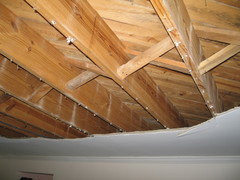
brickeyee
10 years agoLooks like typical dust plumes from between sub-flooring, not moisture related.
Drywall (even two layers) is not all that expensive to purchase or install and finish.
sombreuil_mongrel
10 years agoI agree with Brick, the white is the residue from the plastering when the house was built filtering through the subfloor gaps.
I am 75% sure this was a problem with the nailing of the rock-lath. The nails were driven too deep and broke the paper. Not "settling". It just is odd that it took 50+ years to manifest itself as failure. It had probably been detached at the epicenter for a long time, and gradually more and more nails pulled through in a cascade effect until poof! (or CRASH!)
We usually see water/leaks as the cause of ceiling failure. but it would be quite wet and you would know it.
Back then they used nails with much smaller heads and were supposed to use a lot more of then to make up for it. I have seen rocklath put up with a #4 box nail every 4 inches.
Caseyturtlelearner
Original Author10 years agoInteresting! So you and brick are suggesting this failure was caused due to poor workmanship.
These nails were 1 1/4" long so that would allow for only 1" to be driven into the joist. Is the that another indicator of poor workmanship?
sombreuil_mongrel
10 years agoThat's the right length; How many nails pulled out of the framing when the ceiling fell? Most if not all were still in wood, correct?
They were driven well, a little too well if you catch my drift.
Caseysoutherncanuck
10 years agoI have given you a number of possibilities as to why the failure happened as have many, many, others.
As Brickeeye has stated in other threads he charges $1000.00 per hour for consulting on electronic issues. I sure didn't charge half as much but you have been given some very good information to make your own decision as to why the failure. If you wish you can send me an airline ticket and I can investigate first hand for far less than $1000.00 per.
As someone once said on an internet forum " no matter how high I stand on my chair I can't see your problem from here".
Take the information given, splash a grain of salt on it, and get on with whatever you decide to do. Analysis time for me is done here. Time to move on and fix a few things around my own shack before the rain starts again and my wife finds out I have more than an hour invested on this thread.
Before I sign off you say the nails are 1.25", the 2 layers of drywall and plaster are 3/4 inches, that leaves 1/2" of nail in the joist. What do you think happened? We have never heard of your opinion.
This post was edited by SouthernCanuck on Fri, Jun 14, 13 at 2:02
sombreuil_mongrel
10 years agosoutherncanuck,
the nails were in rocklath which is 3/8" thickness, so the1 1/4" nails were appropriate; there were no cup-head drywall nails at that time. The net thickness of the ceiling (and most of the mass) is from the additional 3/8" of browncoat and whitecoat that were troweled on. That weight is why lots of properly-driven nails needed to be used, and all the more critical on ceilings.
It could be a simple explanation that an untrained worker nailed off that area and his lack of skill ended tragically, but 60 years late.
Caseybrickeyee
10 years ago"It could be a simple explanation that an untrained worker nailed off that area and his lack of skill ended tragically, but 60 years late. "
The nail spacing does appear rather large.
Keep in mind tat they are probably just plain carbon steel nails, and thin ones at that.
Not ring shank, or anything special about them.
Years of slow rusting ad wood shrinkage coupled with an inadequate nailing schedule and walking on a floor above may well have contributed.
Be glad no one as injured.
A neighbor had a section of three coat ceiling (on wood lath) fall on their child and break the 5 year old's collarbone.
Child services then got involved.
I would at least pull at some of the plaster at the edges of what fell to try and assess how solid it is.
You can sink drywall screws if their is any question about the rest staying up.
The area that fell can be repaired with one aer of drywall by sistering the joists with 2x2 pieces to make the face of the new drywall come out flush woth te rest of the ceiling.Two layers of to match the thickness would get you back some of the sound absorbing qualities of the old ceiling through more mass.
While a single thicker layer could also be installed to match it is harder to get and just about requires a drywall lift to install.
The thick sheets get VERY heavy to move around, transport, and hold in place for screw fastening.
turtlelearner
Original Author10 years agoSouthern Canuck, Brickeyee and Lazygardens. I can't thank you guys enough for thinking about, and analyzing my dillemna. After answering your questions, and waiting anxiously for each of your comments, you were able to bring my stress level from a 9+ out of 10 being totally stressed out down to normal ranges. I could tell early on that you guys had lots of experience and that your time was valuable. Your kindness will be remembered long after this project is complete. When the ceiling fell, my first thought was to have someone else deal with it . . . but you guys have given me the confidence to take the clean up part of the job on and if I take on restoration piece, you have definatelly given me good guidance on that. It is beyond me how you are able to think about a problem that is over a 1000 miles away that was possibly initiated by a workmanship error over 60 years ago.
I would also like to thank the other very helpful posters, a special thanks to Toxcrusader, Worthy, Columbus guy, Maryinthefalls and Sombreuil_mongrel.Most of the nails (over 95%) are still in the wood. Regarding the nails . . . my lath (the only portion of the 2 layer gypsum that was nailed) was only a little over a 1/4, so over 75% of the nail was in the joist.
Kami Capener
4 years agoHi turtlelearner - We just had a similar thing happen in our 1949 home (less than a year after we purchased). Wondering if you could update on how it turned out (was it asbestos, did your insurance agree to cover, etc.) Thank you.
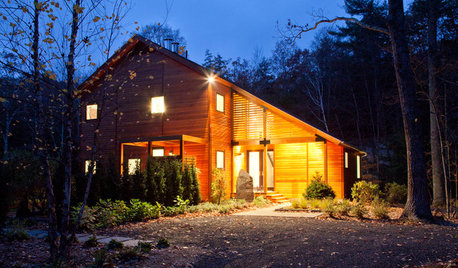
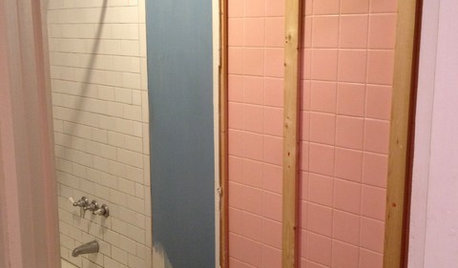




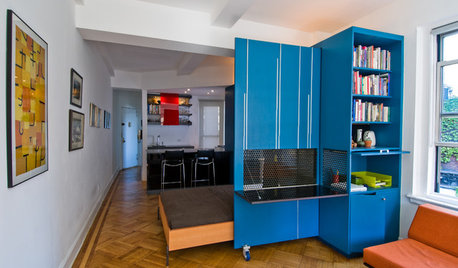

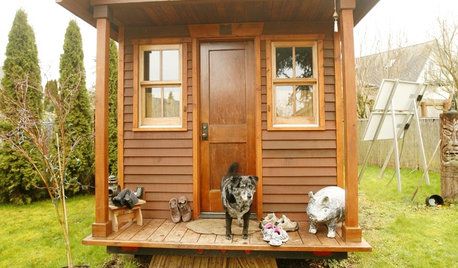
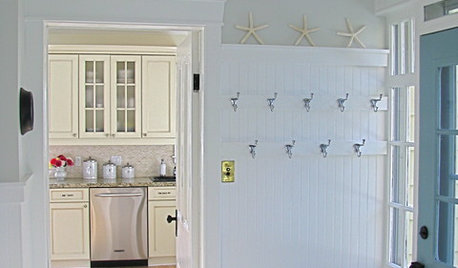










lazy_gardens